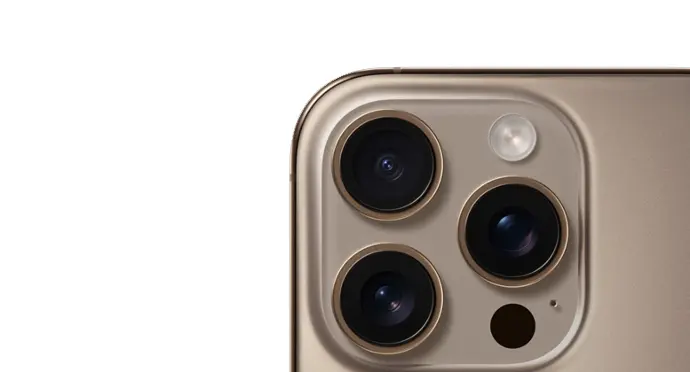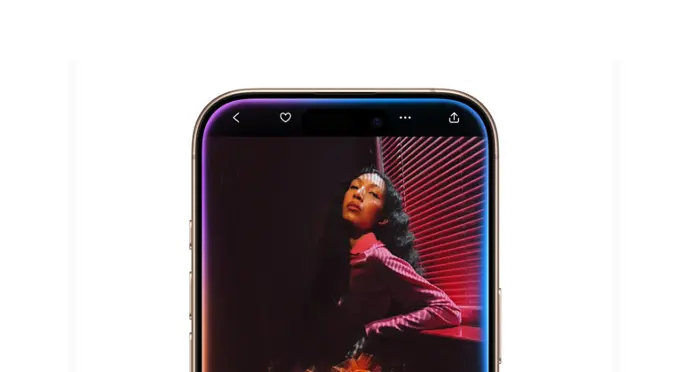Ready to find out which iPhone 16 is worth your upgrade? Let’s break it down!
I've finally made up my mind to update to a new iPhone this year after a protracted wait. I'm so thrilled with the iPhone 16 series that I'm willing to part with my old iPhone XS. Although I was initially leaning toward the Pro model, following the launch event, I've come to feel that most users—including myself—are better served by the non-Pro options.
My daily tasks don't require the Pro models' extraordinary video recording features, even though they would be perfect for professional use. I use my iPhone, like many others, mainly for taking pictures, managing a ton of apps, browsing the web, using social media, and occasionally playing games. This makes it clear to me that the Pro models' advanced features are more than I require. For me, the "Pro" moniker is no longer necessary because the regular models provide all I need for an amazing experience.
Is the iPhone 16 the Perfect Deal for Everyday Users?
With a good mix of features and performance that appeals to a broad user base, the iPhone 16 provides outstanding value for its cost. With improvements in processing speed, battery life, and camera quality, it offers a great user experience without the Pro versions' exorbitant price. This makes it a desirable choice for people looking for a dependable smartphone for daily activities like browsing, gaming, and photography. All things considered, the iPhone 16 is a wise choice for many because it perfectly balances pricing and functionality.
When you've had an iPhone for as long as I have, you should learn to control your impulses and choose when to upgrade. I would have had to wait a long time to go to USB-C if I had upgraded to the iPhone 14. Apple's AI features would have been unavailable to those who had chosen the iPhone 15. I want to use these innovations as a technology writer before I make any judgments.
I think that with the iPhone 16, now is the ideal time to adopt technology that will be useful for many years to come.
It has the newest A18 CPU, and rumors have it that all versions have 8GB of RAM. This means that no matter whatever new iPhone I choose—the entry-level 16 Pro Max or the top-tier 16—I can make use of Apple's generative AI capabilities. The iPhone 16's hardware is almost exactly the same as the 16 Pro because it also has the Action button, Dynamic Island, and a new Camera Control button. This year's models all support Bluetooth 5.3 and Wi-Fi 7, and they are all IP68-rated for protection to dust and water. It's an appealing bundle with few cons when combined with Pro capabilities like thread networking, macro photos, and wind noise reduction for videos.
In terms of battery life, the iPhone 16 Plus is even better than the 16 Pro. According to Apple, both devices can play local videos for 27 hours, but the Plus can stream videos for an extra two hours. Unlike the Pro, which has a battery life of 85 hours, this one can play audio for up to 100 hours. Even if the Pro Max performs better than any of them, the longer battery life is a big benefit when comparing costs. The starting price of the iPhone 16 is $799, that of the 16 Plus is $899, and that of the Pro variants is $999. You will have to budget extra money if you require more storage than the default 128GB. For $899, the Plus offers a great selection of functions and a larger display, so the extra $100 for the Pro is hard to justify.
Are the Lines Blurring Between the Pro and Base iPhone Models?
The difference between the base and Pro iPhone models was evident in past years, as Apple reserved the best features for the more expensive models. In comparison to the iPhone 8 and 8 Plus, the iPhone X gave a sense of innovation that made it possible to consider it the first real "Pro" model. With the iPhone 14 and 15, Apple recycled processors from previous generations, widening the gap even more and limiting access to the newest hardware innovations to the Pro models alone.
That difference is no longer as noticeable with the iPhone 16 series. It can be seen that not many features are unique to the iPhone 16 Pro by using Apple's comparative tool. A Pro Motion display with a refresh rate upgrade from 60Hz to 120Hz, an additional GPU core in the A18 chip, faster USB speeds, an enhanced wide-angle camera, a telephoto lens for high-quality zoom photos, and Night Mode portrait shots are all included for the extra money—though the 16 and 16 Plus still offer standard Night Mode. Comparing this list to that of the iPhone 14 and 15, it is noticeably shorter. There aren't many other features that entice me to upgrade, even though the display is appealing enough for me to think about getting the Pro models.
I think that the Pro models' greatest benefit is their ability to record videos. Professional standards including ProRes and LOG video recording are supported on the iPhone 16 Pro and Pro Max, in addition to the Academy Color Encoding System. The 16 and 16 Plus are limited to 4K 60 frames per second, whereas they can shoot 4K at up to 120 frames per second. The Pro versions also have the ability to record footage by connecting to external sources, which makes the setup for smartphone videography more expert. But since I don't usually capture videos in this manner, I don't think these functionalities are necessary for what I need.
Is Your iPhone a Long-Lasting Investment?
It used to be customary to upgrade your iPhone every two years, but that practice is no longer required. Modern iPhones are designed to last three years or more, and with proper maintenance, they may survive even longer. Apple has taken efforts to improve the repairability of its products and has placed a greater emphasis on product longevity. One example is the ease with which the battery of the iPhone 16 can now be changed.
Although some of these changes are a result of regulatory pressure, they will definitely help people extend the life of their iPhones. Verizon's CEO stated that many iPhone users stay onto their handsets for more than two years, and CIRP data shows that 61% of iPhone owners keep their iPhones for two years or longer.
Upgrading every three years should be plenty unless you're a professional videographer who uses iPhones exclusively for recording. This method is beneficial for the environment as well as your pocketbook. Even though my iPhone XS was released in 2018, it's still functioning well, and I anticipate using an iPhone 16 Plus for many years to come.
Is Upgrading from the iPhone XS to the iPhone 16 a Worthwhile Move?
I've consistently recommended against installing OS betas on primary devices, and I'm glad to report that I heed my own counsel. Upon opting to test the iOS 18 beta on my iPhone XS, my brother kindly gave me his slightly broken 12 Pro Max, which has since become my daily companion.
Though a part of me wants to get the Pro model to cover my demands for the future, I can't quite justify the price. Despite the amazing display on the iPhone Pro, I don't use it for professional video work. Instead, I watch movies and TV shows on my big screen at home.
Therefore, I have to choose between the iPhone 16 Pro and the iPhone 16 Plus. I'm leaning toward the Plus as it has a larger display, greater battery life, and most of the functionality I need. I might even treat myself to the 512GB model if I can stretch my money.
Buy your Favourite Mobile Cover by Clicking on this link:
https://www.hatech.pk/shop?order=create_date+desc&search=iPhone+16+pro+max


Why should i buy iPhone 16 Plus Models not Pro Models?